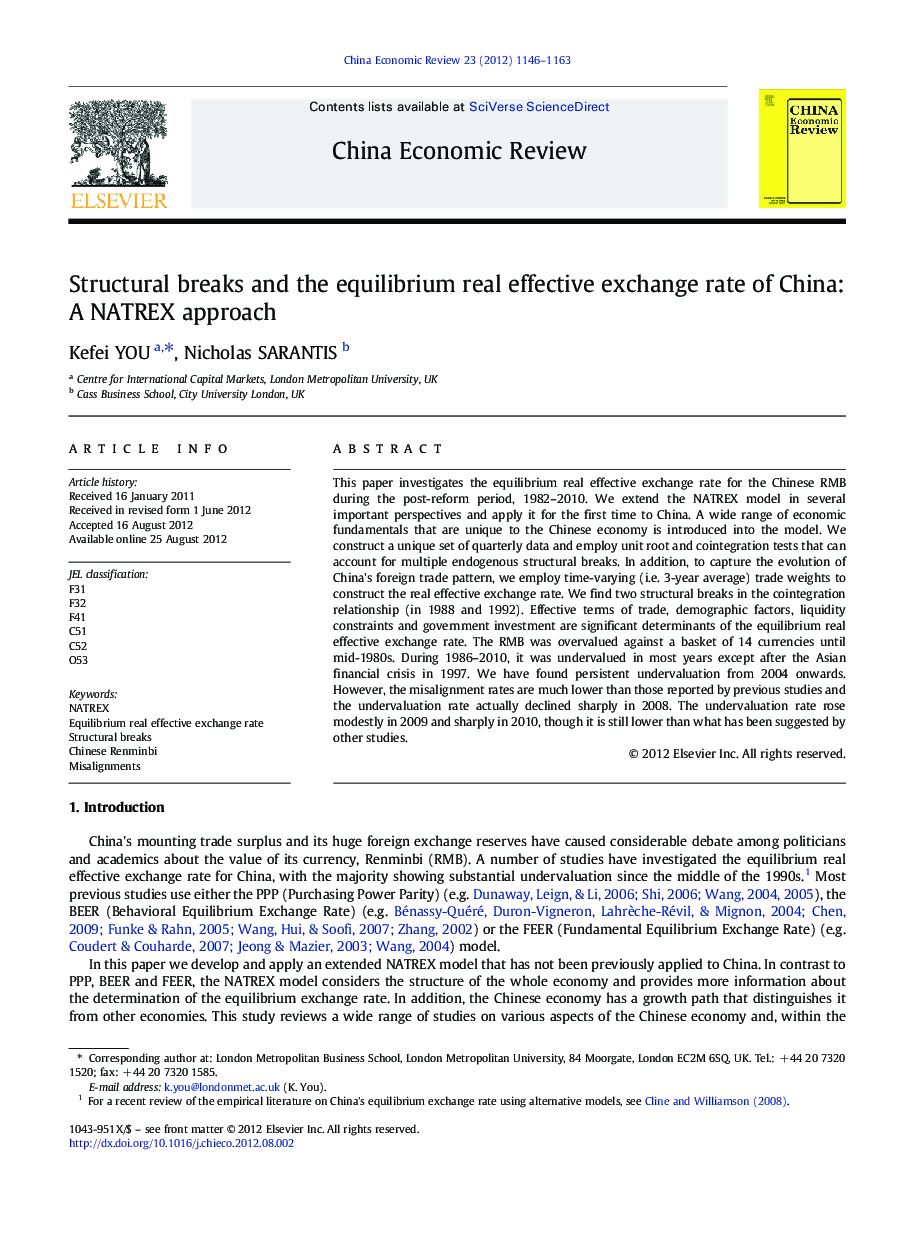| کد مقاله | کد نشریه | سال انتشار | مقاله انگلیسی | نسخه تمام متن |
|---|---|---|---|---|
| 5047760 | 1370917 | 2012 | 18 صفحه PDF | دانلود رایگان |

This paper investigates the equilibrium real effective exchange rate for the Chinese RMB during the post-reform period, 1982-2010. We extend the NATREX model in several important perspectives and apply it for the first time to China. A wide range of economic fundamentals that are unique to the Chinese economy is introduced into the model. We construct a unique set of quarterly data and employ unit root and cointegration tests that can account for multiple endogenous structural breaks. In addition, to capture the evolution of China's foreign trade pattern, we employ time-varying (i.e. 3-year average) trade weights to construct the real effective exchange rate. We find two structural breaks in the cointegration relationship (in 1988 and 1992). Effective terms of trade, demographic factors, liquidity constraints and government investment are significant determinants of the equilibrium real effective exchange rate. The RMB was overvalued against a basket of 14 currencies until mid-1980s. During 1986-2010, it was undervalued in most years except after the Asian financial crisis in 1997. We have found persistent undervaluation from 2004 onwards. However, the misalignment rates are much lower than those reported by previous studies and the undervaluation rate actually declined sharply in 2008. The undervaluation rate rose modestly in 2009 and sharply in 2010, though it is still lower than what has been suggested by other studies.
⺠We extend the NATREX model and apply it to RMB's real effective exchange rate. ⺠We account for two endogenous structural breaks in 1988 and 1992. ⺠The RMB was persistently undervaluation since 2004. ⺠We observe undervaluation declined sharply in 2008 and rose during 2009-2010. ⺠The magnitude of undervaluation is lower than previously studies have suggested.
Journal: China Economic Review - Volume 23, Issue 4, December 2012, Pages 1146-1163